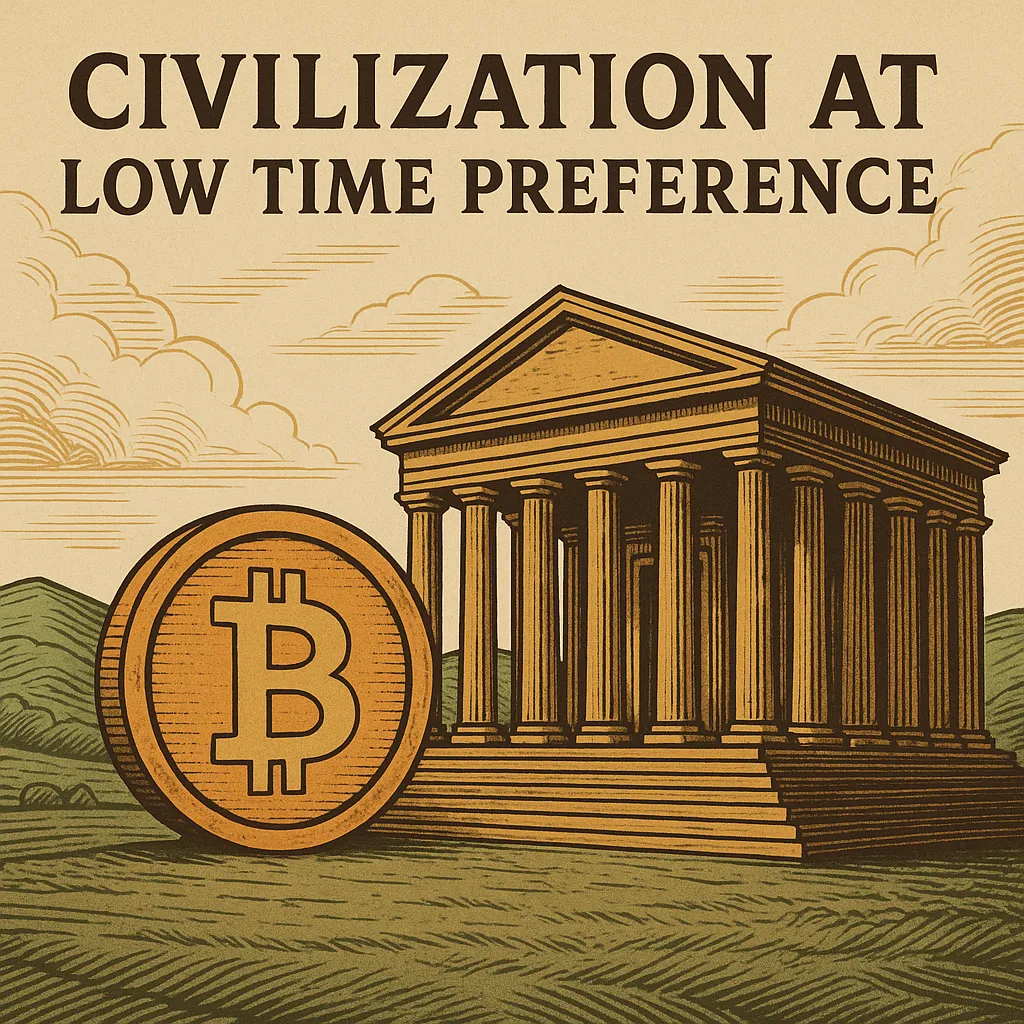
Civilization at Low Time Preference: Why All Great Societies Were Built on Hard Money
When you walk beneath the soaring arches of a medieval cathedral or stand before the ruins of Rome’s aqueducts, you feel something deeper than admiration. You feel continuity — a sense that generations worked together toward a vision beyond their own lives.
These structures are not just engineering marvels. They are monuments to low time preference, built in societies that anchored themselves to sound money. Without that foundation, such legacies would not exist.
What Is Time Preference?
Time preference is a simple but powerful idea: how much do you value the future compared to the present?
A society with low time preference saves, invests, and builds for future generations. It plants seeds it may never see fully grown. A society with high time preference consumes quickly, borrows heavily, and sacrifices tomorrow for today.
Money is the signal that shapes this preference. When money holds value, saving and long-term planning are rewarded. When money is constantly debased, short-term consumption is the rational choice.
Hard Money, Lasting Civilization
History shows us that all enduring civilizations rested on hard money.
Rome’s rise was fueled by the silver denarius, a reliable store of value that enabled long-term trade, infrastructure, and military stability. Rome’s decline began with the debasement of that same coin.
The European Renaissance blossomed under gold- and silver-based systems, which allowed capital to accumulate and finance cathedrals, universities, and exploration.
Industrial Britain thrived on the gold standard, which anchored trust in contracts and supported centuries of investment in technology, railroads, and institutions.
In each case, hard money lowered time preference. Families saved. Merchants planned decades ahead. Kings and city-states invested in projects designed to last for centuries.
Fiat and the High Time Preference Trap
By contrast, fiat money accelerates consumption and decay. When governments can print endlessly, saving becomes futile. Inflation pushes people toward debt, speculation, and frantic consumption.
This is why modern architecture is disposable. Buildings are designed for short lifespans, stripped of ornamentation, built cheaply to be replaced, not revered. Culture itself becomes thin and temporary, because the financial foundation can no longer sustain patience or permanence.
Bitcoin and the Return of Low Time Preference
Bitcoin revives the civilizational foundation of hard money. With a fixed supply, it cannot be debased. It rewards saving and investment over speculation and waste.
In a Bitcoin standard world, individuals and communities can once again think in generations, not quarters. They can restore trust that what is built will hold value — not just in money, but in culture, family, and institutions.
Imagine cities designed to last centuries, not decades. Art and architecture meant to inspire for generations. Families passing down wealth that cannot be inflated away.
That is the power of low time preference, and it begins with sound money.
Civilization Flourishes Where Money Is Hard
Every crumbling empire tells the same story: when money weakens, time preference rises, and culture decays. Every enduring civilization tells the opposite: when money is hard, time preference falls, and culture flourishes.
Bitcoin offers us a choice. Will we keep strip-mining the future under fiat, or will we rebuild civilization on the timeless foundation of sound money?



